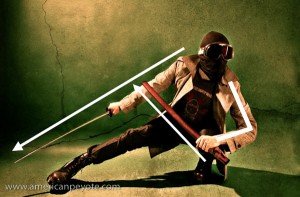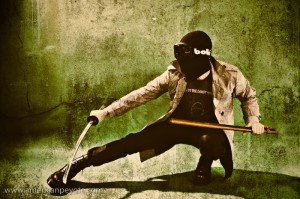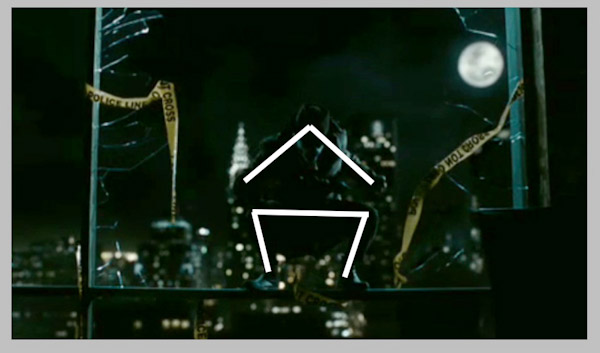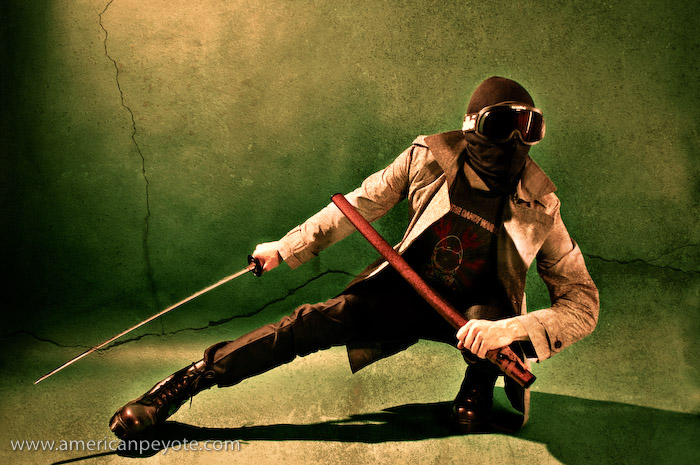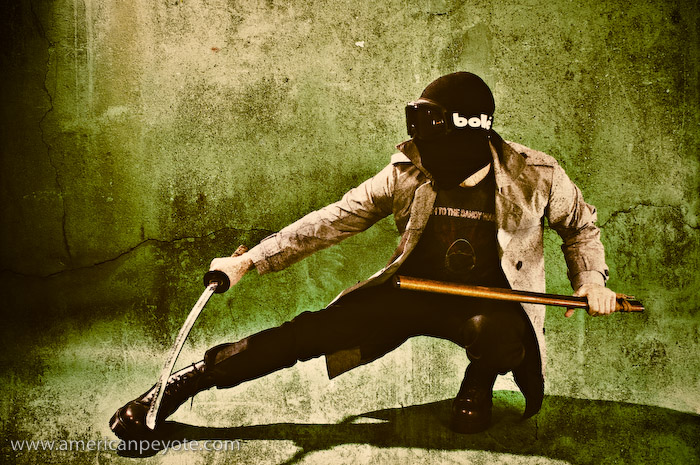It’s good to know other photographers. It’s good to meet, and to discuss things like life and vision and get some perspective from other creative people. It’s good to do collaboration shoots, the two of you decide on an idea/subject to shoot and work to make it a reality. And lastly, it’s good to know photographers with weapons. The conversation went something like…
“Ummmm, do you want to do a creative shoot in your studio?”
“Yeah, sure. Just come over with some stuff and we’ll do a martial arts shoot.”
Ethan from Zurich did just that. In addition to being a photographer he’s also into martial arts, and in addition to a ThinkTank rolling case he walked through my doorway with bag of fun including numbchucks, short swords, and an Onitsuka Tiger jacket. From my side I provided the studio space and lights, along with a Katana. It was the perfect time to add to the Urban Ninja series I had started last year. First we decided on some lighting and then I posed with a pair of my green and white Onitsuka sneakers and the white jacket.
As the night wore on I switched from the Katana to posing with numbchucks and short swords. Posing like a comic book ninja isn’t easy when you’re at it for a few hours, and it equalled a night of climbing in the gym. Plus, when you first start posing with nunchucks you’re careful and timid, then you swing them around a bit, channel the spirit of Bruce Lee, get brave, and start accidentally hitting your head and elbows. When the temple gets hit, that’s when you know it’s time to switch up the model-photographer role in the shoot. After shooting me for a while we switched, Ethan took to posing with deadly blades and I took up my Sony A900 to shoot with.
Posing with weapons is probably the hardest thing I’ve done photographically speaking. It’s easy to think up a cool image (Urban Ninja Concept to Photo), but finding the right model to pose authentically is harder than you might think, and in the end it’s easier to be model and photographer. I mean, as a guy with a childhood American Ninja fantasy, it’s natural for me to bust out a Katana attack pose. I’m always bewildered when the female models I shoot don’t do the same. The thing is, unless the model is really good at taking direction and is athletic, they probably won’t know how to pose with a sword with any authenticity. The worst thing you can do is pose a guy or girl with a sword and expect it to look good just because…
“ummmm, you know, hot women and dudes with and swords are cool!”
Right, just like adding a gun to shoot makes a woman “sexy” and “dangerous.” Think what you like, but I’m of the opinion that an attractive woman who doesn’t know how to hold a sword will just look awkward, and the resulting image will look like crap, unauthentic, and generally be a waste of time to look at (but only if you were going for authenticity in the first place). For example, when I did a shoot with Alexandra, it was obvious that the Katana was too heavy for her, but since we were shooting the Barbie Hunter concept, it fit – because Ninja-Authenticity wasn’t the subject of the shoot. It was awesome doing an authentic martial arts shoot with Ethan. He knows the pose and understands the form of the body and how this all relates to the position of the sword or other weapons. Ethan could probably kill me five different ways with his pinky finger before I realized I was standing in a blue tunnel and as a bonus he has a sweet look.
For the Urban Ninja look I gave Ethan a mask and a pair of welding goggles to wear while he stabbed the air with the short swords. For lighting I used my Creative Light softbox (60cm x 90cm) with a grid from the side and my Elinchrom BxRi 250ws strobe. I had a Sunpak 383 in a Kacey Beauty Reflector high from the opposite side, and there was fill coming from a Lastolite TriLite reflector kit. I post-processed this image with a couple of texture layers, creating a color transition from top to bottom and gave it some grit.
I also shot Ethan with numbchucks wearing the Onitsuka jacket, lighting him only with the gridded Creative Light softbox and added fill from the opposite side with a large silver reflector. With his bald head and muscle-memory knowledge of martial arts, the images of Ethan are just fantastic. This will sound strange, but I love shooting guys with bald heads. You can really focus on the features of the face without getting distracted by the hair. Without the hair your attention is drawn so much more to the eyes and I think this makes for interesting portraits.
More Info
To check out more on my Urban Ninja Concept here are some other posts.
To see more of Ethan’s work check him out on Flickr or his website.

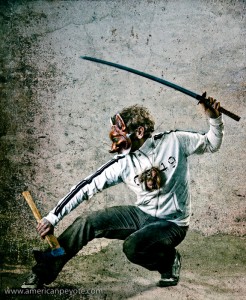

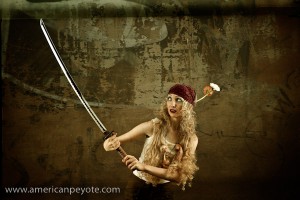
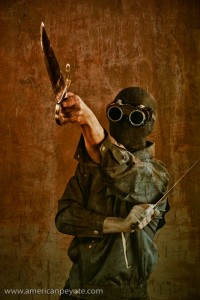
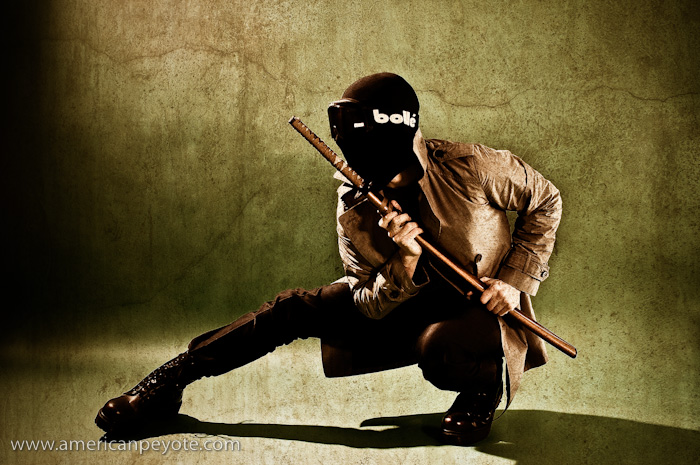


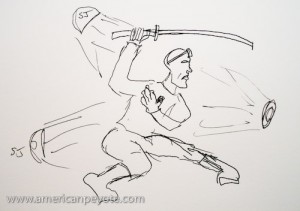 One day I was thinking up image concepts and settled on the
One day I was thinking up image concepts and settled on the 